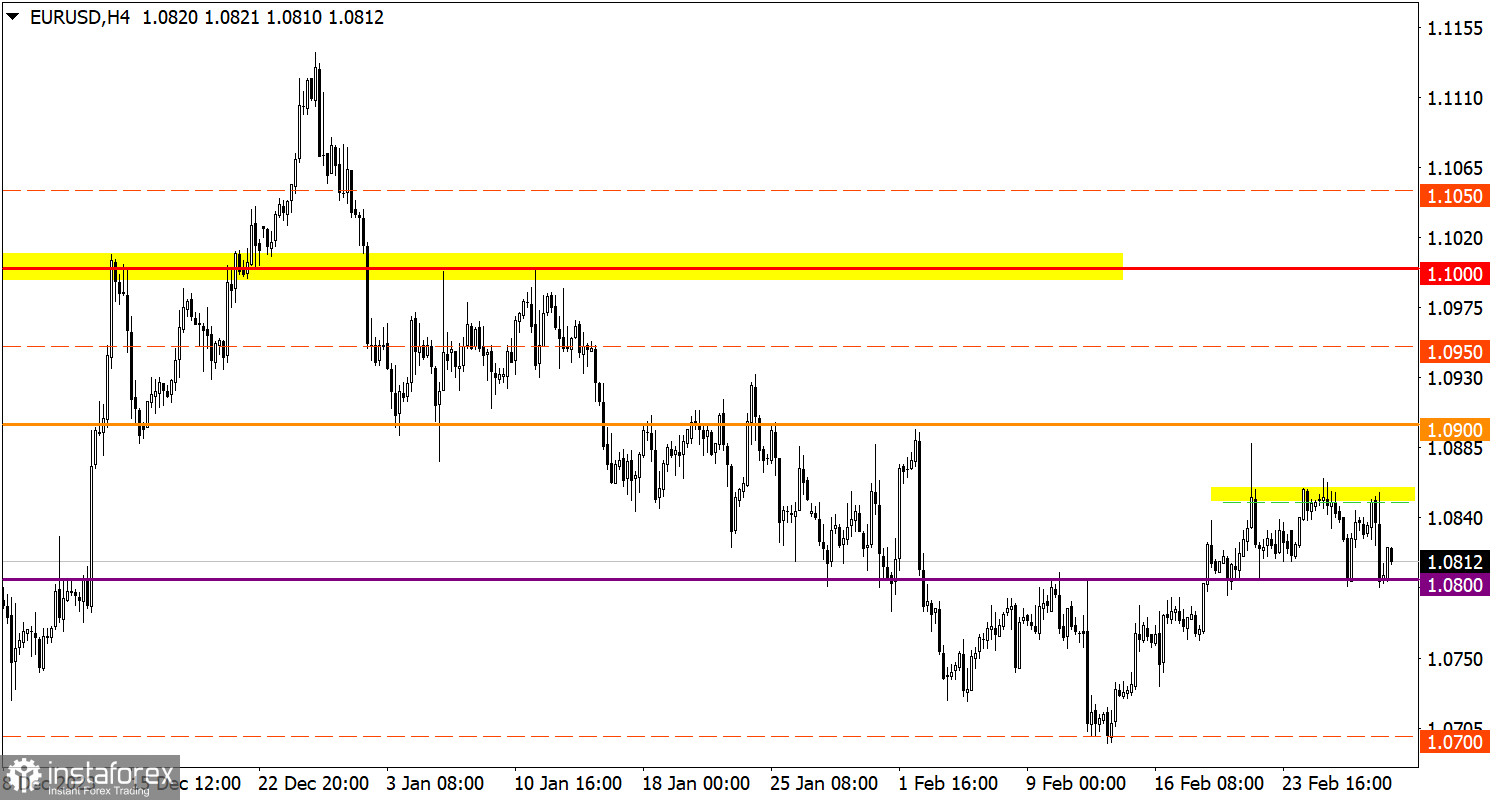Details of economic calendar on February 29
On Thursday, the US Labor Department published a weekly update on unemployment benefits. The data turned out to be worse than analysts' expectations. The number of continued unemployment claims increased from 1,860 million to 1,905 million. Besides, the number of initial applications for benefits rose from 202K to 215K. Despite the signs of weakness in the labor market, the US dollar asserted its strength across the board. Perhaps the reason for the greenback's growth was expectations of a decline in inflation in the Eurozone. The inflation report will be available on Friday.
Overview of charts on February 29
The EUR/USD pair again reached the level of 1.0800, where traders cut on short positions was observed. Judging by the speculative price swings, the instrument will soon quit the range between 1.0800 and 1.0850.
The GBP/USD pair has been following a downtrend from the resistance level of 1.2700. As a result, the instrument is approaching the support level of 1.2600.

Economic calendar on March 1
Today, the preliminary inflation data for the EU will be released. The annual CPI is expected to slip to 2.5% in February from 2.8% in January. This may contribute to the US dollar's advance.
Trading plan for EUR/USD on March 1
If EUR/USD settles below 1.0800, traders will add more short positions. Consequently, the instrument will trade lower. Until then, the realistic scenario is a climb to 1.0850.

Trading plan for GBP/USD on March 1
To enable a further increase in short positions, GBP/USD needs to settle below 1.2600. Otherwise, this level will be viewed by traders as support. In turn, this will encourage a gradual recovery in the pound sterling.

What's on charts
The candlestick chart type consists of graphic rectangles in white and black with lines at the top and bottom. With a detailed analysis of each individual candle, you can see its characteristics relative to a particular time period: opening price, closing price, maximum and minimum price.
Horizontal levels are price coordinates relative to which a price may stop or revered its trajectory. In the market, these levels are called support and resistance.
Circles and rectangles are highlighted examples where the price developed. This color highlighting indicates horizontal lines that may put pressure on the price in the future.
Up/down arrows are guidelines for a possible direction in the future.
 English
English 
 Русский
Русский Bahasa Indonesia
Bahasa Indonesia Bahasa Malay
Bahasa Malay ไทย
ไทย Español
Español Deutsch
Deutsch Български
Български Français
Français Tiếng Việt
Tiếng Việt 中文
中文 বাংলা
বাংলা हिन्दी
हिन्दी Čeština
Čeština Українська
Українська Română
Română

